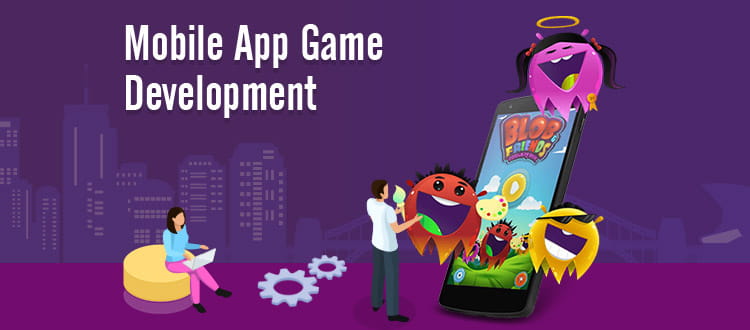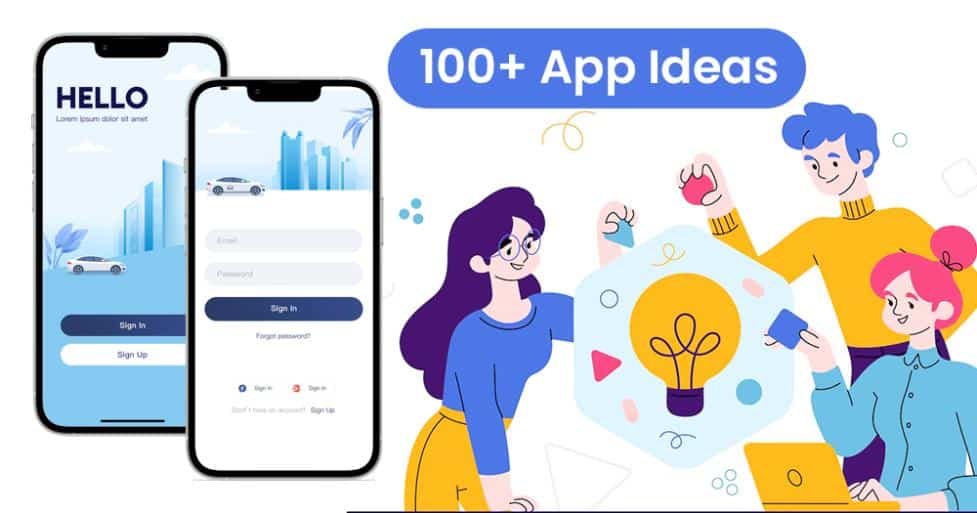“How about the idea of creating your own app without writing a single line of code? How can mobile application development be done without coding? Now you can develop your application without taking help from developers with low code development company. Amazed? Let’s find out more about this.”
Mobile applications are the basic needs of human mankind. One cannot deny the fact that mobiles are very important in day-to-day life. The importance of mobiles comes from the applications installed in them. There are many applications which help us in our daily activities such as booking a cab, tickets and a lot of other app features which make our life better.
The IT industry has introduced a lot of other ways to build applications for various platforms. These new techniques and ideas not only made the apps smart and advanced but also helped mankind to live a luxurious life.
For several decades organizations had introduced a lot of tools to solve big business problems. The application has made the work easy for all businesses. From sales to accounting, hospital to education, every business is beneficial and benefitting its respective users.
From native to cross-platform, we have witnessed several other ways to develop applications for various mobile platforms. From the designers’ and developers’ perspectives, mobile applications are not as easy as we think.
Developers write an endless line of code to build an application. These applications consist of effortful designing, complex coding, and several other integrations of plugins and whatnot.
To resolve this problem and to make the application development much easier, the developers introduced an option. Now you don’t need to write 1000 lines of code every time and waste days in building the applications. The commendable and extremely good applications can be made within days with low code platform development technology.
You must be wondering, what is the low code platform and development technology? How does it work? How has it prove to be better than the other programming-based coding style? Let’s find out about low code and its benefits along with the business benefited by it.
What is Low Code?
The low code development platform is software that provides the programmers with an easy environment to create applications via graphical user interfaces and already built-in configuration. Instead of coding programming language, one can use low code development, which simply allows you to drag and drop. It also offers you to use of desired buttons and other features to build the applications that suit your business requirements.
Likewise, the low code development platform saves time and allows anyone to develop the application without any knowledge of other programming languages. It is not necessary for a person to learn or know about several computer programming languages to develop a smart app. Now, low code development provides a non-technical person to build apps according to his requirements.
Also Read: Low-Code Vs. Traditional Development
Why Did We Need Low Code Development If We Already Had Such a Vast Variety of Mobile App Development Platforms?
It is often observed that whenever the client asks for the application there are a lot of other formalities that have to be taken place at the time of requirement analysis. The wireframes designed by the designers may sometimes not match the client’s wavelength. On which every step the project manager and the client try to work on the same page but most of the time they will do that. Low code app development platforms help the client to visualize the app and draw the out structure of the application as per his choice. One can also add various features to integrate a variety of plugins and create the app exactly the same as the wishes for their business. The Other major reasons behind the development and use of low code technology are mentioned below.
Benefits of Low-code Development Platforms
Improved agility
In the long run the apps built-in local platforms help organizations to be more agile. Visual designs that are made with a graphical interface that is a low code platform are easily created instead of coding this designing work and allows room for customization and more options.
Saves time
Low code allows drag and drops the option to build the application within less time. Not just IT, it proves to be comprehensive for all types of businesses to make it become more productive.
More productivity
As discussed earlier, Low code development allows apps to build in very little time. The organization has more chances to develop and create applications for other clients, i.e., the organization can take more projects and boost productivity by tendering applications in a shorter time. The developers don’t need to sit for hours and work for several months to create an application. Creating an app is just a task of one or two days.
Customer support
Low code development has not only impacted the IT industry but many other businesses around the globe. The major effects that can be seen are speed which brought better customer experience. Any new changes that come to the market can be quickly adapted by the customers and they can change or customize the application according to themselves up to an extent.
Easy integrations
When applications were made with complex codes, it was sometimes difficult to integrate into the various plugins or modules. The application developers were concerned about the version of integration and the application’s compatibility. It was very important to match the perfect wavelength between the integrated plugin and the application. Some of the plugins were not compatible with the applications and their users were not taking complete advantage of the available plugins in the market. It restricted the plugin integration in the application.
Low code development platforms have overcome and solved the issue of integration plugins. A person can now add any kind of plugin which he or she wants for the application and can customize the app according to the business requirements. When you talk about payment gateways, low code development platforms allow you to simply integrate the payment gateway without writing any single line of code.
Top 10 Low Code Development Platforms in 2022
- OutSystems
- Claris
- Salesforce Lightning Platform
- Kissflow
- Mendix
- Pega Platform
- Zoho Creator
- Spring Boot
- Visual LANSA
- ProcessMaker
Here you can read detailed blog on top low code development platforms and here you can read detailed guide on outsystems vs mendix.
The Traditional Application Development Process
- Determine the requirements and plan the structure number
- Select backend Framework data source and third API
- Select the frontend framework
- Choose deployment stack setup and create operation plans. It also creates wireframes and prototypes for your application
- Write lines of code for you which you have chosen and JavaScript framework also write a bunch of failing tests
- Check your models and hook them off the data stores
- Define and code your business logic
- Create views to provide and receive JSON data to the front end
- Implement your workflows and UI. Integrate third-party API using their published interface or any supported library
- Repeat until the test passes
- Check security performance quality and other user acceptance entities
- Deploy and update the application as per the demand
The Low Code Development Process
- Determine the requirements
- Select any third-party APIs
- Draw the app workflow, data models, and user interfaces in the visual IDE
- Connect your API, usually with automatic capability
- If necessary, add any headcount to the frontend or to customize the automatically generated SQL queries. Test for user acceptance
- Deployed to production, then push updates with a single click
Can Non-technical People Make Mobile Applications Using Low Code App Development Platforms?
The low code technology laid emphasis on coming up with the solution for non-technical to showcase their creativity. It is not necessary that every business owner knows to code. Visualization may vary according to the person. Therefore, it becomes difficult for designers to think from the perspective of the client. The same gap follows in the entire app development process. Whether it is native app development or cross-platform app development, the client and development team experience the gap between the visualization and outcome.
The Low code app development platforms allowed nontechnical people to visualize their own ideas to turn them into reality. The simple drag and drop components make the desired application in no time.
Conclusion
Technology is evolving and so are the needs of mankind. To ease the manpower, a lot of inventions are taking place. Low code is one of those technologies which gives freedom to anybody to build an app without writing a single line of code. For all businesses, apps play a major role in the market representation plan. The revolution of low code has started and let’s see how far it takes the mobile app development technology.
Great Together!









